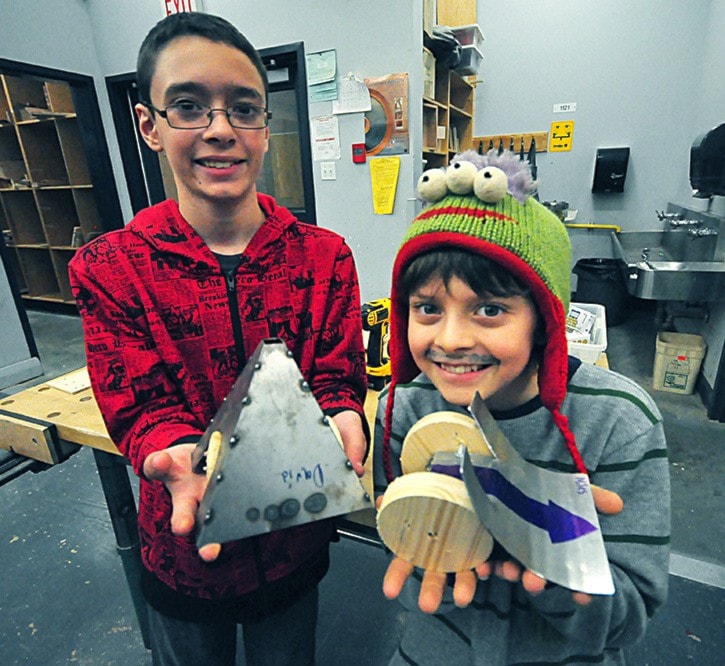Remember the first thing you built as a kid? Whether it was cool tower out of Lego, or a car out of wood, it likely felt like the greatest engineering feat since the Great Pyramid of Giza.
It’s the same kind of pride and excitement that Grade 6 and 7 students at Journey Middle School, along with Grade 9 students from Edward Milne Community School, get to enjoy every week, thanks to a joint robotics and shop program that engages young minds into the world of engineering and mechanisms.
The students work together with shop teachers to build Sumo-bots, which involves assembling motors and gears, and creating components out of metal and wood. Once these are complete, the students will enter them into the Skills Canada competitions, which begin locally and progress to a national level.
As such, the robotics club has two divisions: Junior and Senior Robotics, where the complexity of the bots is substantially different.
In the junior division, all bots have the same twin motors and gearbox setup, allowing them to go forward, in reverse, as well as turn left and right, similarly to a tank or a bobcat.
But as all animals are equal, some are more equal, such as David Lambert’s unique two-wheel pyramid robot design, which provides protection from all sides of the battlefield.
“It’s built for the ultimate defence, and yeah, there’s a chance of someone getting under the wheels, but it’s not very likely,” Lambert said.
Miles Drabitt’s Mini Wheels takes a more traditional design of having two wheels in the rear and a deep cowcatcher-type plow in the front.
Both designs, albeit simple in nature, offer a not so simple scenario for the students to figure out: do you protect your robot from all sides, but risk getting scooped up and rolled over, or do you provide the robot offensive capabilities, while leaving its sides and rear exposed to attack?
And building a successful bot is only half the challenge, as its final victory on the field will also depend on the user.
“I think a big part of it is not only how you design it, but how well you drive it yourself,” Drabitt said, adding to add better, grippier wheels on his robot soon.
Drabitt, who’d like to be an engineer or architect, hopes to one day build a robot that could walk, something like a sumo wrestler.
But the club isn’t about competition, or who can build the best robot, after all both groups of students help each other out for a common purpose: to learn.
One of the club’s instructors, Trevor Royale, has worked for three years with sumo bots of all kinds. He oversees both ends of the club, from the analogue-based drive-by-wire junior sumo bots, to the more complex remote-control sumo bots that use digital components that come with their own programming language. Last year, his team won silver in the Scouts Canada competition in Abbotsford, and aims to get a group going next April as well.
The club is considered an extracurricular activity as it is after school hours, with a one-time entrance fee of $20, and is open to all students in Grade 6, 7 or 9. Club meetings are every Wednesday, from 3:30 to 5 p.m. at EMCS, and Thursday, from 3:10 to 4:10 p.m. at Journey.
